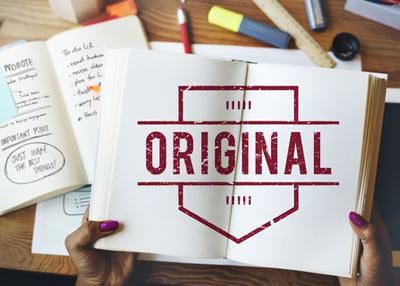Trademark confusion can be—for lack of a better word—confusing. When we see an opportunity, in the form of a recent trademark and unfair competition opinion out of the Eastern District of Virginia, to learn from an excluded expert’s mistakes in conducting a trademark confusion survey, we feel it is worth sharing.
 If you are looking for an expert in a trademark infringement or unfair competition case, it’s good to know what, precisely, you should be looking for your expert to do. Otherwise, it would be “akin to the government’s counting heads in China for the U.S. Census.” Let’s examine where this expert went wrong.
If you are looking for an expert in a trademark infringement or unfair competition case, it’s good to know what, precisely, you should be looking for your expert to do. Otherwise, it would be “akin to the government’s counting heads in China for the U.S. Census.” Let’s examine where this expert went wrong.
1. Market Research Experience Does Not Equal Trademark Confusion Experience
One might think four decades of experience in market research, branding effects, and consumer behavior would enable a witness to opine about trademark confusion. The court here made it perfectly clear, it does not. Valador, Inc. v. HTC Corp., Case No. 1:16-cv-1162 (E.D.Va. Mar. 15, 2017). As the court in Valador explained, trademark confusion in the legal context has a very particular meaning, of which the expert needs to be aware and have a good understanding. Specifically, an expert qualified to discuss trademark confusion needs to have experience conducting trademark confusion surveys. Id. Thus, experience with marks alone and the relevant market is not enough. Also helpful to prove qualification, the court notes, would be experience testifying in trademark confusion cases, published pieces on the topic of trademark confusion, or specific experience in the relevant market and use of marks in that market. Id.
2. The Confusion Survey Must Be Posed to the “Right Universe”
In the world of trademark confusion, there are two common types of confusion: forward confusion and reverse confusion. I like to think of reverse confusion as the Gucci knockoff. The confused consumer buys the knockoff thinking they are getting a real Gucci product. In this case, it would be Gucci suing the knockoff manufacturer under a reverse trademark confusion theory. In proving confusion in this instance, what type of consumers should the expert survey? People who like saving money by buying knockoffs or people who like and buy Gucci products? If you chose the former, that is the U.S. Census based on a head-count in China. In Valador, the plaintiff’s consumer base was mostly big government agencies who used plaintiff’s services to create problem-solving software, while the defendant sold virtual reality headsets to consumers in the United States. The expert surveyed a group of 18-34 year old males who “enjoy virtual reality entertainment.,” i.e., the defendant’s market base as opposed to the plaintiff’s. Id. As the court noted, this was “plainly the incorrect universe for a reverse confusion case.” Id.
3. The Survey Questions Cannot Be Misleading
“How likely do you think it is that there will be confusion between these two marks if they are used by different companies, selling similar products?” What is wrong with this question? If you said it is misleading, we’ll give you half-credit because of the section header. We’ll give you full credit if you can say why it is misleading. The question already assumes confusion is a possibility. It injects confusion into the answer by asking how likely confusion will be, rather than whether there is any. The expert’s survey in Valador was similarly filled with many questions, which courts have found result in unreliable survey conclusions. It begs its own answer by suggesting the very link the survey is meant to uncover. Id.
4. Test for Confusion But Maintain Control
In a properly-constructed trademark confusion survey, there must be two groups: 1) a test cell to find raw confusion; and 2) a control cell to discount confusion arising from the survey itself. The expert in Valador failed to implement a control mark or control group to establish reliability in his survey. While he also failed to implement actual market conditions by not showing the marks side-by-side in the manner they present themselves in the market, he also failed to utilize a control mark to show his survey was not based entirely on raw confusion. A control mark is one similar in appearance to the mark at issue, with the “key exception of the characteristic whose influence is being assessed.” Meaning, an attempt to create confusion using marks that are similar but in a different way to ensure the similarities at issue are truly the cause of the confusion.
Trademark confusion can seem confusing, which is why you need an expert who knows how courts analyze it and knows how to conduct a proper, reliable confusion survey to prove or disprove actual confusion in the consumer base. Don’t end up with an expert who counts the wrong heads! Defuse your trademark confusion by working with us to find the best expert.




 />i
/>i

